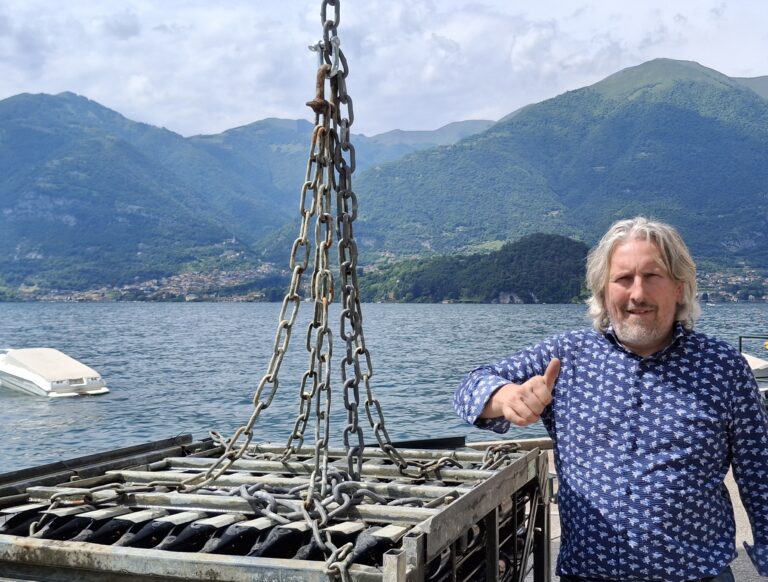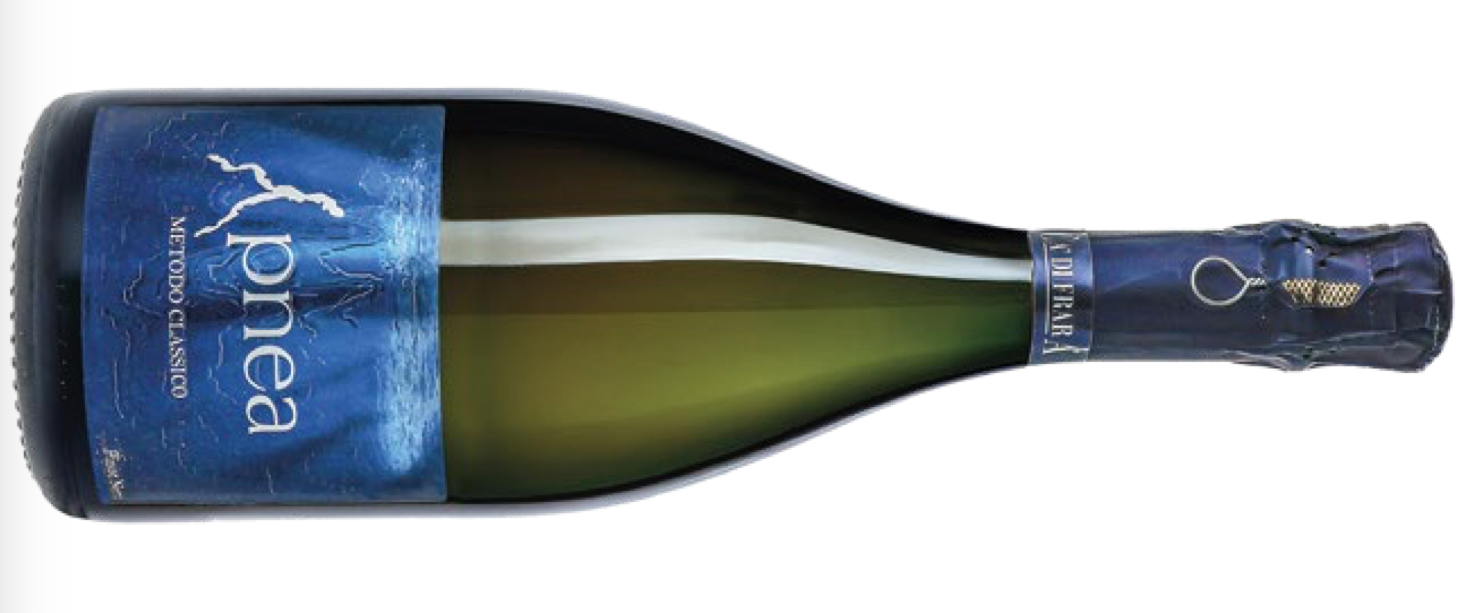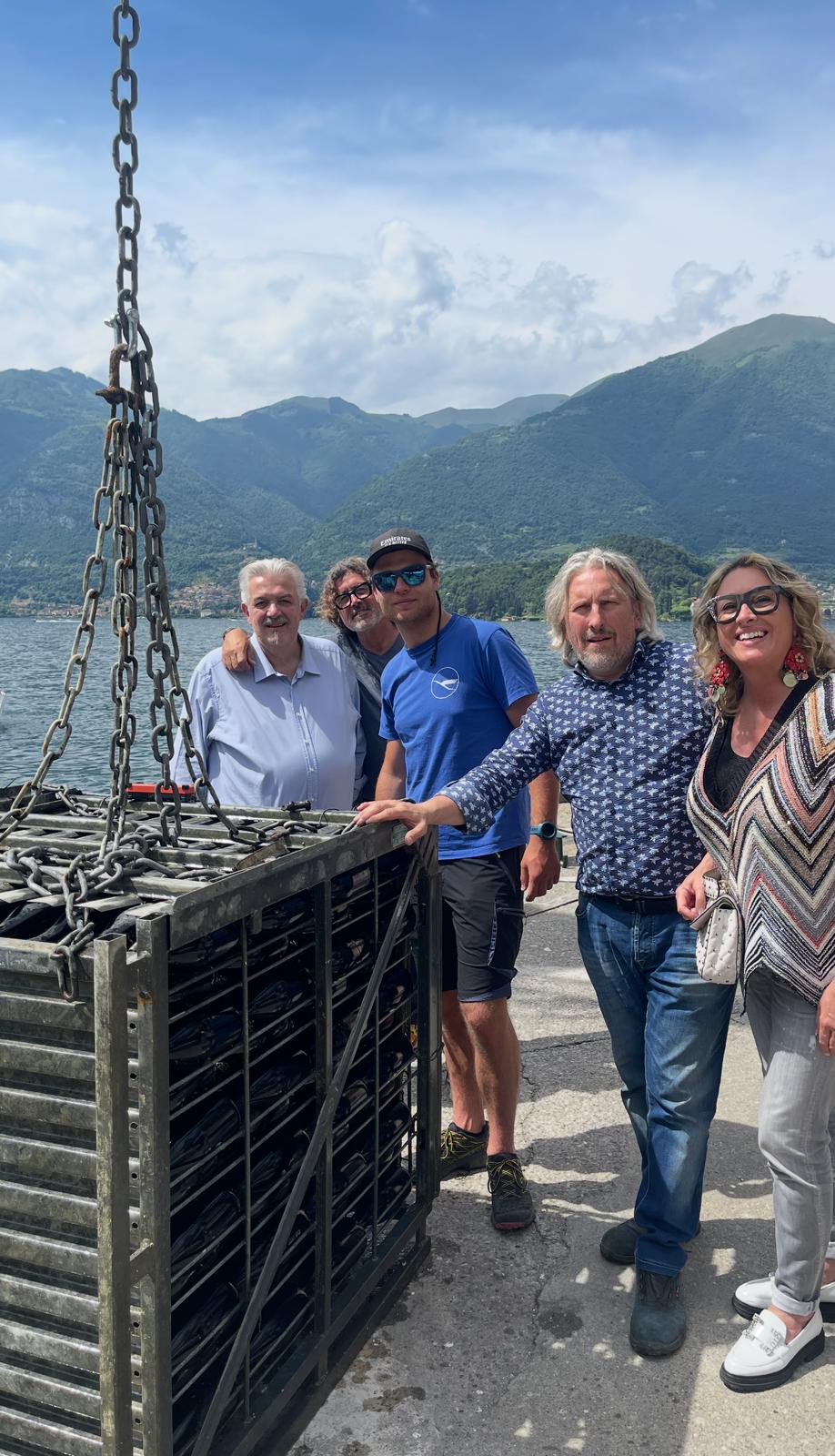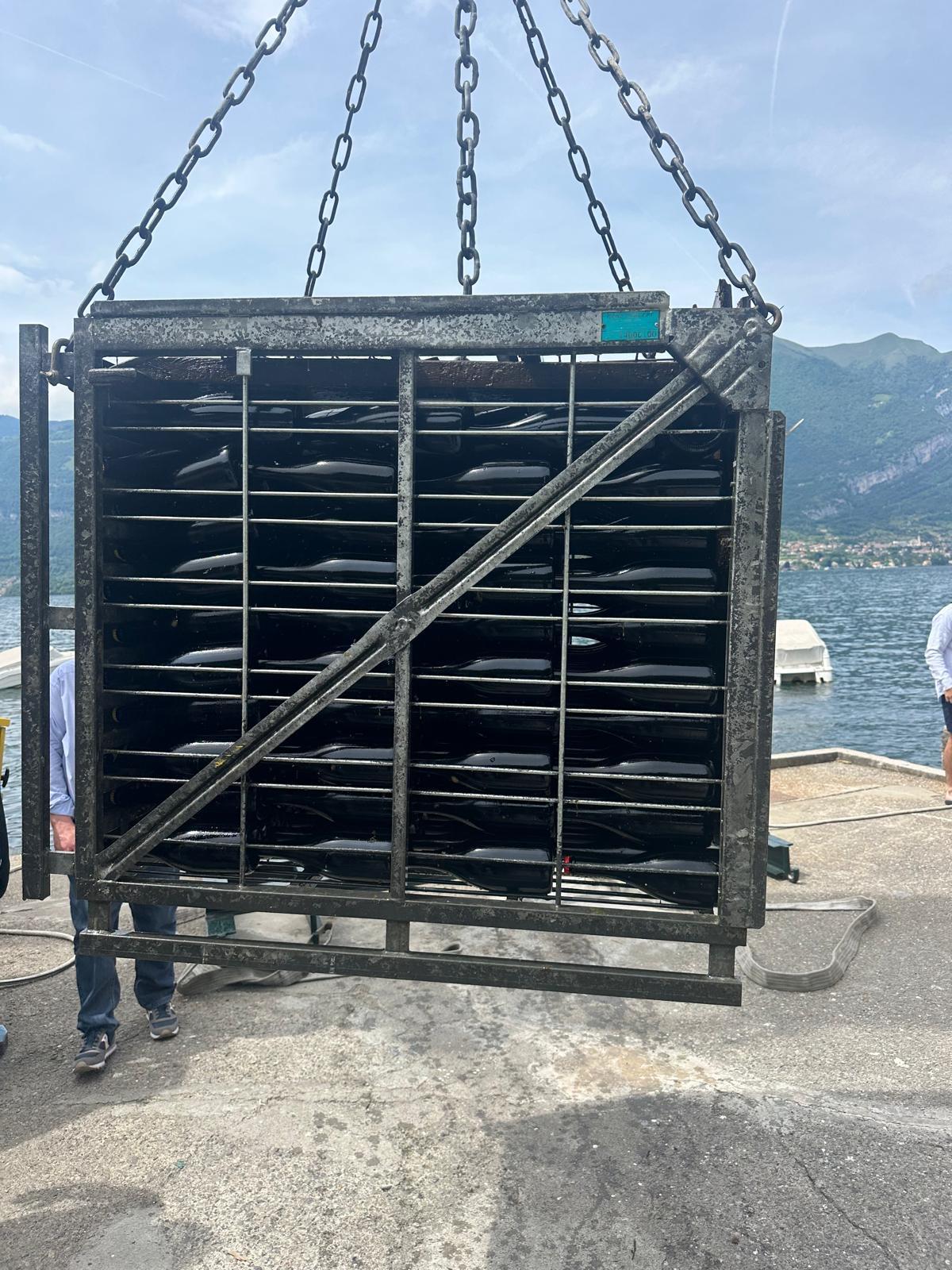
Ca’ di Frara Apnea, the discovered result of the latest immersion
Metodo Classico aged on lees for 24 months in the depths of Lake Como
written by Erika Mantovan
Lake Como, a renowned destination attracting American luxury travelers and an increasingly diverse audience, has welcomed a unique project that enlivens the lake’s cultural life and showcases its enduring magic—if any was still needed. The spotlight is on wine: sparkling wines aged underwater are also produced in other parts of Italy, such as Akènta Sub from Cantina Santa Maria La Palma in Sardinia, Abissi by Enoteca Bisson in Liguria, Mormora from Cantina Paololeo in Puglia, Aphrodite by La Pietra di Tommasone in Ischia, and Nautilus from Agricola Vallecamonica in Lake Iseo, Lombardy. In Tuscany, Cantina Subacquea Benthos Wine offers cuvées like Morbìn and Plinio, while in Emilia-Romagna, Tenuta del Paguro ages its Mare Urchin Spumante on the Adriatic seabed. Challenging this prestigious tradition at Lake Como is Luca Bellani, pushing the boundaries of innovation in sparkling wine.

Luca Bellani, owner of the historic Ca’ di Frara winery in Oltrepò Pavese, has marked a new milestone with his Metodo Classico Apnea, a sparkling wine aged underwater for 24 months in Lake Como.
Launched in 2020, this revolutionary project uses Pinot Nero, the flagship grape of Oltrepò Pavese and one of the most important varieties in the region both in terms of production and vineyard area. The underwater aging process allows for a completely different evolution compared to traditional cellar aging.
The cuvée, made from base wines of the 2021 vintage supplemented by 40% reserve wines, is distinguished by its very fine bubbles, a hallmark of this method. On May 28, 2025, bottles from the fifth immersion (“Quinta Calata”) were retrieved from the waters of Lezzeno, near Bellagio, after resting submerged for two years. (Initially, there was mention of the sixth immersion, but the recovered bottles are actually from the fifth; the sixth is currently underwater.)
Instead of resting statically in the cellar after bottling and crown cap closure, the bottles are immersed in metal cages holding 600 bottles each, suspended at a depth of 14–16 meters by air balloons and anchored to the lakebed with chains. This depth ensures a constant temperature above 10°C, maintaining yeast activity throughout the aging period.
A key element of the method is the natural and continuous remuage caused by the lake’s waves and currents, gently rocking the suspended cages. Unlike static cellar aging, where yeast settles on the bottle walls and stabilizes, rendering part of itself inactive, here the yeast remains in constant motion, never settling on the bottle neck.
This continuous movement causes the yeast to release much more into the wine’s organoleptic components. In the cellar, once stabilized, the yeast has fulfilled its role, and the sediment no longer contributes significantly to enrichment. Underwater, however, the release is faster and continuous, uninhibited, resulting in a completely different product—much richer, fuller, denser, and more “fatty” on the palate.

“These are the observations we have made in the field: the continuous rocking of the water keeps the yeasts in suspension, intensifying the aging process and giving the sparkling wine a creamier and more complex texture,” said Veronica Barri, head of marketing and co-project leader of Apnea.
At the end of the underwater aging period, the bottles return to the cellar for the traditional three-month remuage, then are disgorged, corked with a natural cork stopper, and aged further for six months before release.
The 3,000 bottles from the latest immersion will be available in early 2026, marking an exceptional achievement for Ca’ di Frara and Luca Bellani’s pioneering approach in the world of sparkling wine.

